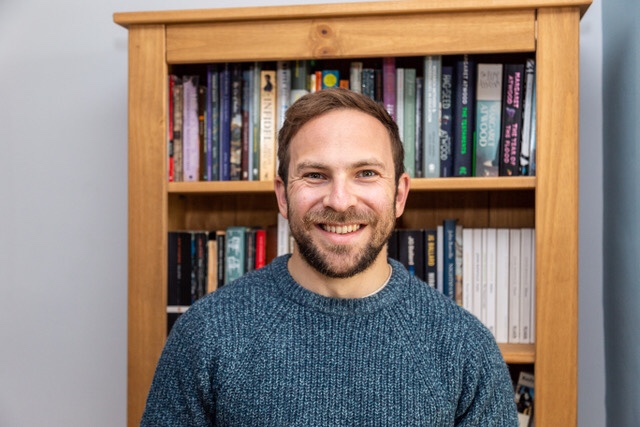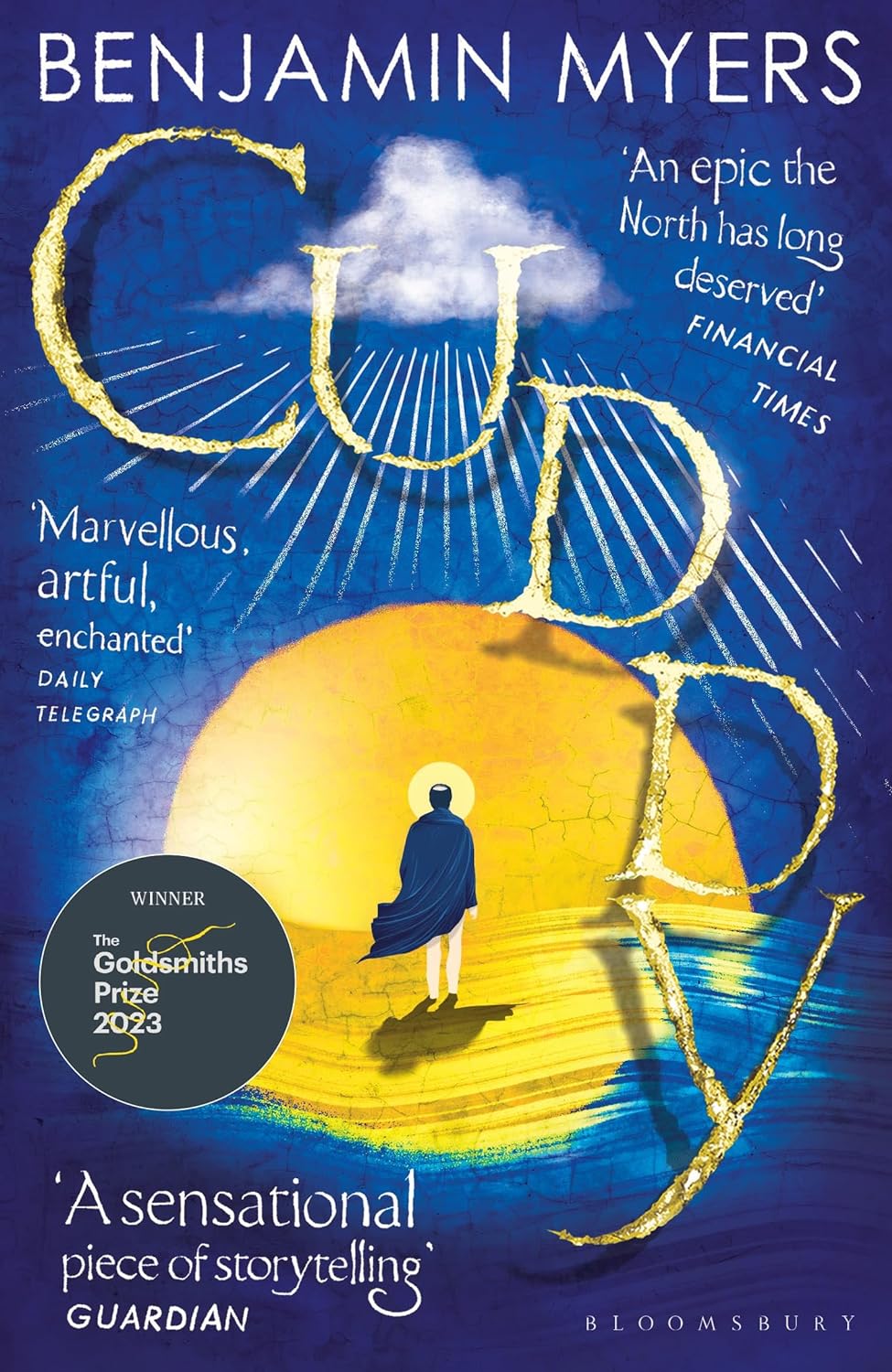Benjamin Myers’s Cuddy (Bloomsbury Circus, 2023) won last year’s Goldsmiths Prize. The Prize rewards experimental fiction1 and chair of judges, Tom Lee, commended Cuddy as ‘A millennia-spanning epic told in a multitude of perfectly realised voices’. The ‘Cuddy’ of the title is St Cuthbert, informally patron saint of the north of England whose body lies in Durham Cathedral.
From the voice of dead Cuddy to a final-year history student at Durham University, Cuddy stretches Myers’s ability to embody those characters.
But it is also a book that interrogates the value of shape. That could be shape on the page, shape as a word, or shape as it turns into something lived and experienced: architecture.
Plane shapes
I am first interested in what geometry calls ‘plane figures’. In Discovering Patterns in Mathematics and Poetry, Marcia Birken and Anne Coon summarise that ‘Plane figures, including squares, rectangles, and triangles, are two-dimension[al] shapes that may be drawn on a flat piece of paper or plane surface’.2 As we will see, the most important plane figures in Cuddy are the rectangular paragraphs of the opening Book.
On four occasions in Book I—when we are told the story of Cuddy’s century-long removal from Inner Farne to what will become Durham—the narrator Ediva recites her vision of the cathedral-to-come. On each occasion the paragraph opens with vocabulary of forging and building. At first it’s the ‘Lightning heat and bolt flash’, before a ‘shower of sparks’ and then ‘Stone scratch’. We then finish with the ‘White hot’ flame.3
This vocabulary actually refers to Ediva’s experience of seeing this visions. This emotional and sensational content will be important later. What becomes clear to her is always the image of ‘the stone mountain summoned by faith, made by man’ (Myers, p. 58). This is where they will build the cathedral, itself a kind of human-made mountain.
As Ediva returns to consciousness during these visions, the text on the page matches that sensation of waking up. The type gets increasingly smaller until it’s barely readable at all.

The effect of this is suggest a diminishment, or a change of shape. Rather than a rectangular paragraph, it hints at something triangular, implying a spire (albeit one turned upside down). It moves from the shape of rigid orthogonality to fashioned stone that is honed and reduced to fit. This is just like the stonemasons repairing the cathedral in the twenty-first century: ‘[N]ew pieces have been perfectly slotted flush into the gaps left by the removal of old blocks.’ (Myers, p. 400)
Visiting the cathedral
Gregory Currie has also written about the rectangle in fiction. For Currie, if fiction is considered a rectangle, then its length and breadth are equated with imagination and knowledge making up ‘independent determiners of an important property—the shape of fiction.’4 When I read Cuddy, for me the ‘independent determiners’ of its fiction are these rectangles of diminishing font and the way that these paragraphs are literalised in the cathedral that registers historical progress.
The cathedral takes shape throughout the novel, but in the final book, set in 2019, we see the legacy of the cathedral in the twenty-first century. This is the counterbalance to the other fictional ‘determiner’ of the diminishing font of Book I.
For Michael Cuthbert—the last section’s protagonist who is uncannily named after the saint of the novels’ title—the cathedral is an exciting novelty. Although he’s from a village on the outskirts of Durham, he hasn’t visited the cathedral properly because ‘going inside the cathedral was what middle-class families did[. …. T]he secret history of the building’s interior belonged to the academics’ (Myers, p. 390).
But two significant things happen when Michael considers the three-dimensional space of the cathedral; when, that is, it becomes less of a plane space seen from afar, and more of a lived-in, architectural space.
Uncanny architecture
First, Michael is wowed by the space, size, and dimensions of the cathedral—wowed by its shape: ‘No normal person, thinks Michael, could have conceived of such a structure[.]’ (Myers, p. 385). This takes us back to Ediva’s dream visions of the the mountain–cathedral, and how she was able to channel divine sentiment.
Second, Michael feels an uncanny sense of recognition:
It feels both strange yet familiar, unnerving but exhilarating.
Myers, p. 389
It feels like—what?
It feels like coming home.
Sigmund Freud understood the ‘uncanny’ as a simultaneous feeling of ‘homeliness’ and ‘unhomeliness’. Michael’s feeling of ‘both strange yet familiar’ is a textbook example of this, and the repeated ‘It feels’ demonstrates his own steady recognition of it.
It shows that Ediva’s shapely visions of the cathedral aren’t just blueprints for the cathedral building. They are also emotional transmissions through time (remember the building vocabulary that actually reflects Ediva’s sensations!). The visions transmit a kind of homeliness, a gathering space in which individuals and communities can dwell.5
- To read about a different kind of experimental fiction, see my review of the 2022 Goldsmiths Prize winner, Diego Garcia, here. ↩︎
- Marcia Hirken and Anne C. Coon, Discovering Patterns in Mathematics and Poetry (Vienna: Alberto Martino, 2008), p. 88. ↩︎
- Benjamin Myers, Cuddy (London: Bloomsbury Circus, 2023), pp. 40, 58, 95, 127. ↩︎
- Gregory Currie, Imagination and Knowing: the Shape of Fiction (Oxford: Oxford University Press, 2020), p. 2) ↩︎
- I am drawing on Martin Heidegger’s idea of ‘dwelling’ from his essay ‘Building, Dwelling, Thinking’ (1954). The Stanford Encyclopaedia of Philosophy defines Heidegger’s notion of ‘dwelling’ as follows: ‘Heidegger sometimes uses the term dwelling to capture the distinctive manner in which Dasein is in the world. To dwell in a house is not merely to be inside it spatially in the sense just canvassed. Rather, it is to belong there, to have a familiar place there.’ ↩︎


Leave a Reply